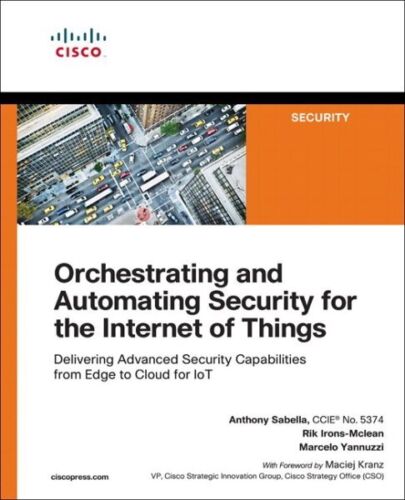Your cart is currently empty!
Tag: Automating

The Role of Artificial Intelligence in Automating Network Management
In today’s fast-paced digital world, the demand for efficient and effective network management is greater than ever before. With the increasing complexity of networks and the sheer volume of data being generated, traditional methods of network management are no longer sufficient to meet the needs of modern businesses. This is where artificial intelligence (AI) comes in.AI has the potential to revolutionize the way networks are managed by automating many of the routine tasks that network administrators typically perform. By leveraging AI algorithms and machine learning techniques, network management systems can analyze vast amounts of data in real-time, identify patterns and anomalies, and make intelligent decisions to optimize network performance and security.
One of the key roles of AI in network management is in predictive analytics. By analyzing historical data and trends, AI-powered network management systems can predict potential network issues before they occur, allowing administrators to take proactive measures to prevent downtime and ensure optimal performance. This not only improves the overall reliability of the network but also reduces the need for manual intervention, saving time and resources.
AI can also play a crucial role in network security by continuously monitoring network traffic and identifying potential security threats in real-time. By analyzing network behavior and detecting suspicious activities, AI-powered security systems can quickly respond to cyber threats and mitigate risks before they escalate into full-blown attacks. This proactive approach to network security is essential in today’s threat landscape, where cyberattacks are becoming increasingly sophisticated and frequent.
Furthermore, AI can automate network troubleshooting and optimization tasks, such as load balancing, bandwidth management, and network configuration. By analyzing network performance metrics and identifying bottlenecks or inefficiencies, AI-powered systems can automatically adjust network settings and resources to ensure optimal performance and user experience. This not only improves network efficiency but also frees up administrators to focus on more strategic tasks that require human intervention.
Overall, the role of AI in automating network management is essential for modern businesses to stay competitive and secure in today’s digital age. By leveraging AI technologies, organizations can streamline network operations, improve performance, enhance security, and ultimately drive business success. As AI continues to evolve and mature, the possibilities for automating network management are endless, and businesses that embrace this technology will undoubtedly gain a competitive edge in the market.
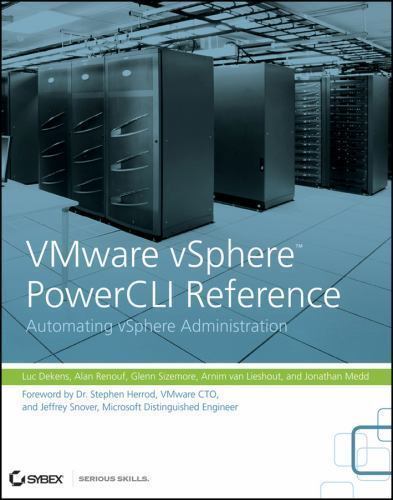
VMware vSphere PowerCLI Reference : Automating vSphere Administra

VMware vSphere PowerCLI Reference : Automating vSphere Administra
Price : 7.47
Ends on : N/A
View on eBay
tion with PowerCLIVMware vSphere PowerCLI is a powerful command-line interface tool that allows administrators to automate and streamline their vSphere administration tasks. With PowerCLI, you can easily manage your vSphere environment, create scripts to automate repetitive tasks, and perform complex operations with just a few commands.
In this post, we will provide a reference guide for using PowerCLI to automate vSphere administration tasks. Whether you are a beginner or an experienced PowerCLI user, this guide will help you understand the basics of using PowerCLI and provide you with examples of common tasks that can be automated with PowerCLI.
Some of the key features and benefits of using PowerCLI for vSphere administration include:
– Automating routine tasks: PowerCLI allows you to automate repetitive tasks such as creating VMs, configuring host settings, and managing virtual networks.
– Simplifying complex operations: With PowerCLI, you can perform complex operations such as migrating VMs, setting up vSphere clusters, and managing storage resources with ease.
– Efficient management: PowerCLI provides a streamlined and efficient way to manage your vSphere environment, saving you time and effort.
– Scripting capabilities: PowerCLI allows you to create scripts to automate multiple tasks and customize your vSphere administration workflows.To get started with PowerCLI, you will need to install the PowerCLI module on your computer and connect it to your vSphere environment. Once you have set up PowerCLI, you can start running commands and scripts to automate your vSphere administration tasks.
Here are some common tasks that you can automate with PowerCLI:
– Creating VMs: You can use PowerCLI to create new virtual machines, configure their settings, and deploy them in your vSphere environment.
– Managing hosts and clusters: With PowerCLI, you can perform host and cluster management tasks such as adding hosts to a cluster, configuring host settings, and monitoring host performance.
– Managing storage: PowerCLI allows you to manage storage resources, create datastores, and configure storage policies for your VMs.
– Networking: You can use PowerCLI to manage virtual networks, create virtual switches, and configure network settings for your VMs.Overall, VMware vSphere PowerCLI is a valuable tool for automating vSphere administration tasks and simplifying the management of your vSphere environment. By utilizing PowerCLI, you can increase your productivity, reduce manual errors, and streamline your vSphere administration workflows.
#VMware #vSphere #PowerCLI #Reference #Automating #vSphere #Administra, VMware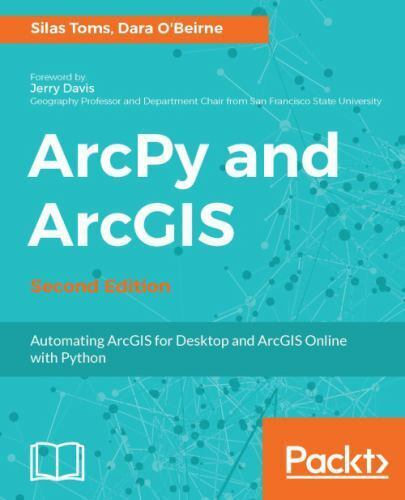
ArcPy and ArcGIS: Automating ArcGIS for Desktop and ArcGIS Online with Python

ArcPy and ArcGIS: Automating ArcGIS for Desktop and ArcGIS Online with Python
Price : 25.10
Ends on : N/A
View on eBay
ArcPy and ArcGIS: Automating ArcGIS for Desktop and ArcGIS Online with PythonAre you tired of manually performing repetitive tasks in ArcGIS for Desktop and ArcGIS Online? Look no further than ArcPy, the Python site package that allows you to automate these processes and save time and effort.
With ArcPy, you can write scripts that automate tasks such as geoprocessing, data management, map production, and more. You can even use it to interact with ArcGIS Online, allowing you to automate tasks such as publishing and updating web maps and layers.
Whether you’re a GIS professional looking to streamline your workflow or a beginner looking to learn more about automation in ArcGIS, ArcPy is a powerful tool that can help you achieve your goals.
So why waste time on repetitive tasks when you can automate them with ArcPy? Start exploring the possibilities today and see how Python can revolutionize the way you work with ArcGIS.
#ArcPy #ArcGIS #Automating #ArcGIS #Desktop #ArcGIS #Online #Python, cloud computing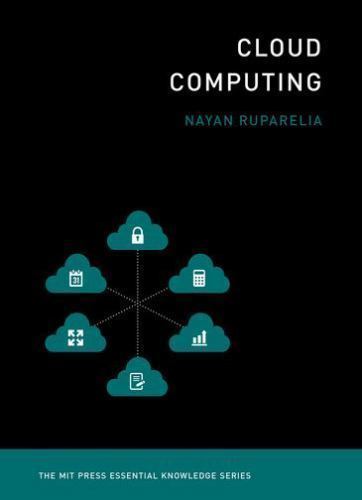
Cloud Computing: Automating the Virt… by Josyula, Venkata Paperback / softback

Cloud Computing: Automating the Virt… by Josyula, Venkata Paperback / softback
Price : 9.88
Ends on : N/A
View on eBay
Cloud Computing: Automating the Virtual FutureIn this informative book by Josyula, Venkata, readers will dive into the world of cloud computing and learn how it is revolutionizing the way we store and access data. From the basics of cloud computing to advanced automation techniques, this book covers it all.
With the increasing demand for scalable and flexible IT solutions, cloud computing has become a crucial technology for businesses of all sizes. This book explores how cloud computing enables automation of virtual resources, making it easier for organizations to manage their data and applications efficiently.
Whether you are a novice looking to understand the fundamentals of cloud computing or a seasoned professional seeking to enhance your automation skills, this book has something for everyone. Packed with real-world examples and practical tips, Cloud Computing: Automating the Virtual Future is a must-read for anyone interested in harnessing the power of the cloud.
Get your copy in paperback or softback today and embark on a journey towards a more automated and efficient virtual future!
#Cloud #Computing #Automating #Virt.. #Josyula #Venkata #Paperback #softback, Cisco Data Center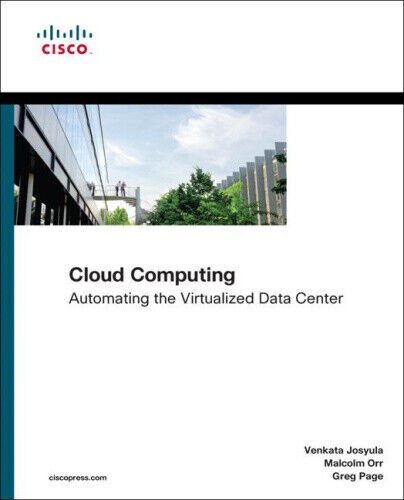
Cloud Computing: Automating the Virtualized Data Center (Networking Technology)

Cloud Computing: Automating the Virtualized Data Center (Networking Technology)
Price : 62.21
Ends on : N/A
View on eBay
Cloud computing has revolutionized the way businesses operate by providing a more efficient and cost-effective solution for managing data and applications. One of the key components of cloud computing is the virtualized data center, which allows organizations to easily scale resources and improve flexibility.In our latest post, we explore how cloud computing is automating the virtualized data center through networking technology. By leveraging automation tools and software-defined networking (SDN), businesses can streamline operations, reduce manual tasks, and improve overall efficiency.
We delve into the benefits of automation in the virtualized data center, including faster provisioning of resources, improved network security, and increased agility. Additionally, we discuss how SDN enables organizations to centrally manage and configure network devices, resulting in a more responsive and resilient infrastructure.
If you’re looking to optimize your data center operations and harness the power of cloud computing, be sure to check out our latest post on automating the virtualized data center through networking technology. Stay ahead of the curve and embrace the future of IT infrastructure with cloud computing.
#Cloud #Computing #Automating #Virtualized #Data #Center #Networking #Technology, Cisco Cloud Computing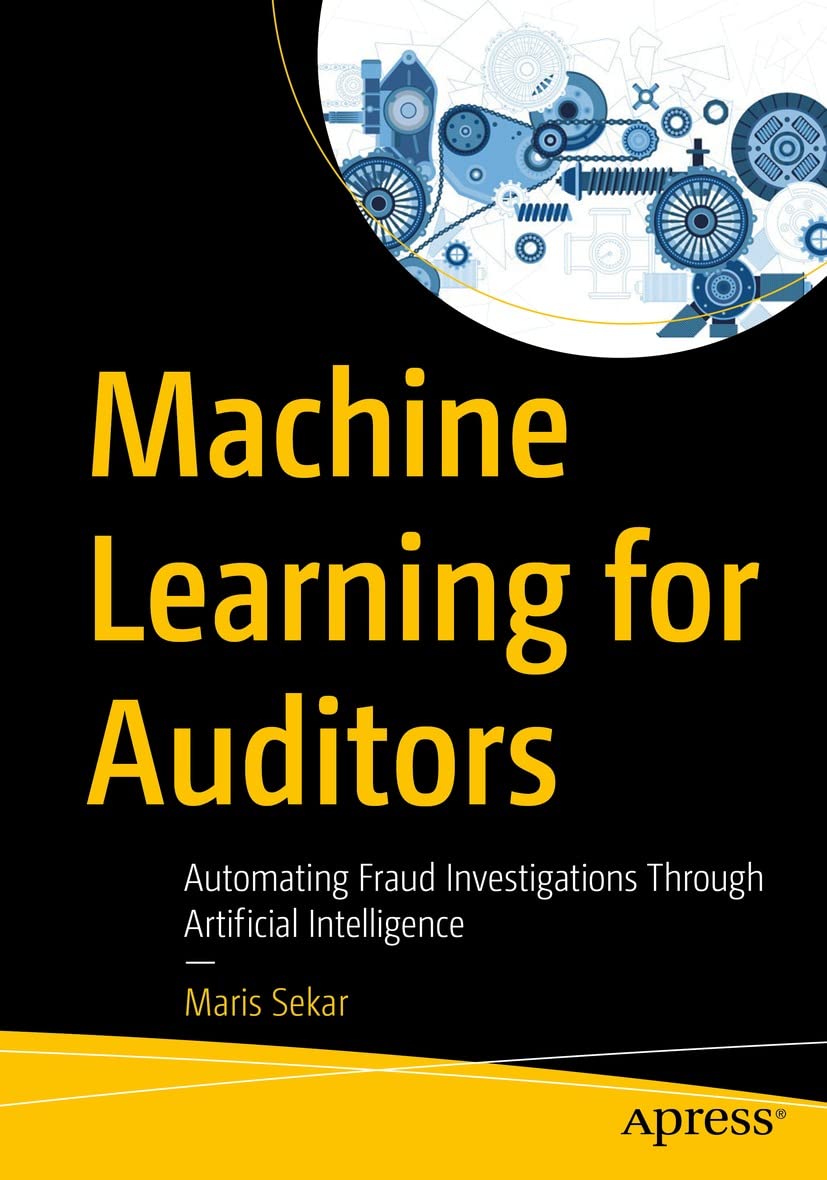
Machine Learning for Auditors: Automating Fraud Investigations Through Artificial Intelligence
Price: $31.00
(as of Dec 26,2024 21:54:30 UTC – Details)
ASIN : B09THZJVSD
Publisher : Apress (February 26, 2022)
Publication date : February 26, 2022
Language : English
File size : 11684 KB
Text-to-Speech : Enabled
Screen Reader : Supported
Enhanced typesetting : Enabled
X-Ray : Not Enabled
Word Wise : Not Enabled
Print length : 262 pages
Page numbers source ISBN : 1484280504
As technology continues to advance, auditors are increasingly turning to machine learning and artificial intelligence to streamline their processes and improve efficiency. One area where these technologies have shown great promise is in fraud investigations.By utilizing machine learning algorithms, auditors can sift through large amounts of data to identify unusual patterns or anomalies that may indicate fraudulent activity. These algorithms can also be trained to recognize specific fraud schemes based on historical data, making it easier to detect and prevent similar incidents in the future.
Furthermore, machine learning can help auditors prioritize their investigations by flagging high-risk transactions or accounts for further review. This not only saves time and resources but also allows auditors to focus on the most critical areas of concern.
Overall, machine learning has the potential to revolutionize the way auditors approach fraud investigations, making the process faster, more accurate, and more effective. By embracing these technologies, auditors can stay ahead of the curve and better protect their organizations from financial losses and reputational damage.
#Machine #Learning #Auditors #Automating #Fraud #Investigations #Artificial #Intelligence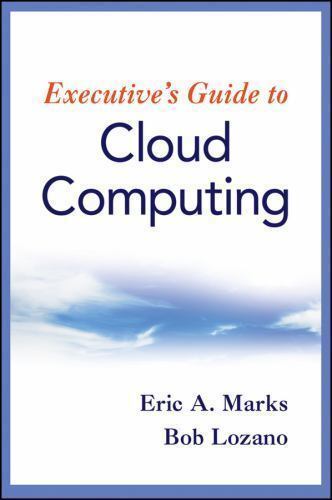
Cloud Computing: Automating the Virtualized Data Center

Cloud Computing: Automating the Virtualized Data Center
Price : 12.03
Ends on : N/A
View on eBay
Cloud computing has revolutionized the way businesses operate by providing a flexible and scalable solution for managing and storing data. With the help of virtualization technology, cloud computing allows organizations to automate their data centers, streamlining processes and increasing efficiency.One of the key benefits of cloud computing is the ability to automate tasks within the virtualized data center. This automation not only saves time and resources but also reduces the risk of human error. By automating routine tasks such as provisioning resources, managing workloads, and monitoring performance, organizations can ensure that their data center operates smoothly and efficiently.
Automating the virtualized data center also allows for greater flexibility and agility. With the ability to quickly scale resources up or down in response to changing demands, businesses can adapt to market fluctuations and customer needs more effectively. This agility is crucial in today’s fast-paced business environment, where the ability to respond quickly to changing conditions can make the difference between success and failure.
In addition to improving efficiency and flexibility, automation in the virtualized data center can also enhance security. By automating security tasks such as patch management, access control, and threat detection, organizations can ensure that their data is protected against cyber threats and unauthorized access.
Overall, cloud computing and automation go hand in hand, offering businesses a powerful solution for managing their data centers more effectively. By automating routine tasks, organizations can free up resources to focus on strategic initiatives and innovation, driving business growth and success.
#Cloud #Computing #Automating #Virtualized #Data #Center, Cisco Cloud Computing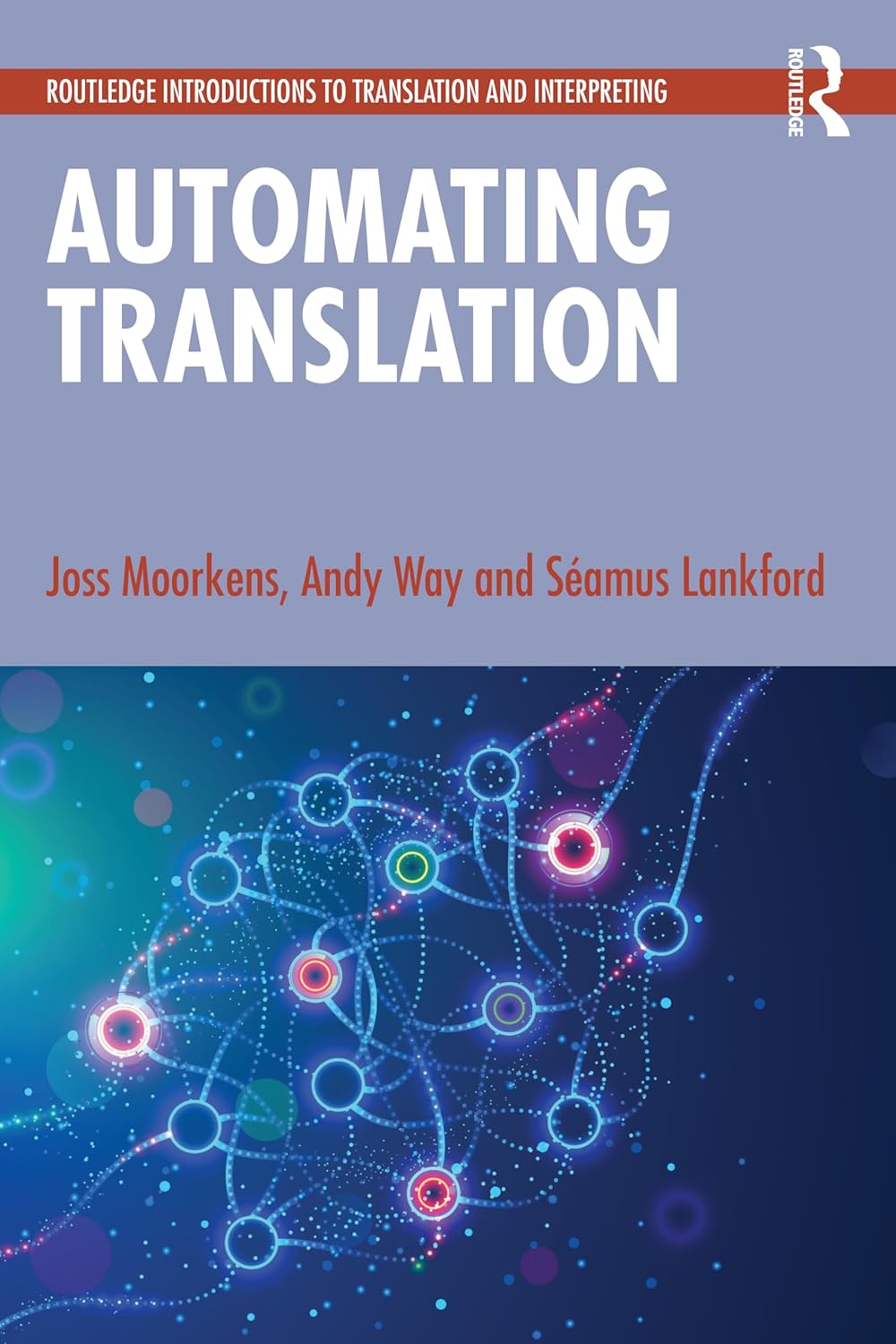
Automating Translation (Routledge Introductions to Translation and Interpreting)
Price: $46.99
(as of Dec 25,2024 02:18:06 UTC – Details)
Publisher : Routledge; 1st edition (August 29, 2024)
Language : English
Paperback : 248 pages
ISBN-10 : 1032436808
ISBN-13 : 978-1032436807
Item Weight : 13.6 ounces
Dimensions : 6.14 x 0.57 x 9.21 inches
Automating Translation: A Comprehensive Introduction to the Latest Technologies in Translation and InterpretingIn today’s globalized world, the need for accurate and efficient translation and interpreting services is more crucial than ever. With the rise of technology, the field of translation and interpreting has seen significant advancements in automation, making the process faster and more cost-effective.
The book “Automating Translation” provides a thorough introduction to the latest technologies in translation and interpreting, offering insights into machine translation, computer-assisted translation tools, and other automated solutions. Written by experts in the field, this book covers a wide range of topics, including the history of translation technology, the benefits and limitations of automated translation, and the future of the industry.
Whether you are a seasoned professional looking to stay ahead of the curve or a newcomer interested in learning more about the field, “Automating Translation” is a valuable resource for anyone involved in translation and interpreting. Stay informed about the latest trends and advancements in the industry with this comprehensive guide.
#Automating #Translation #Routledge #Introductions #Translation #Interpreting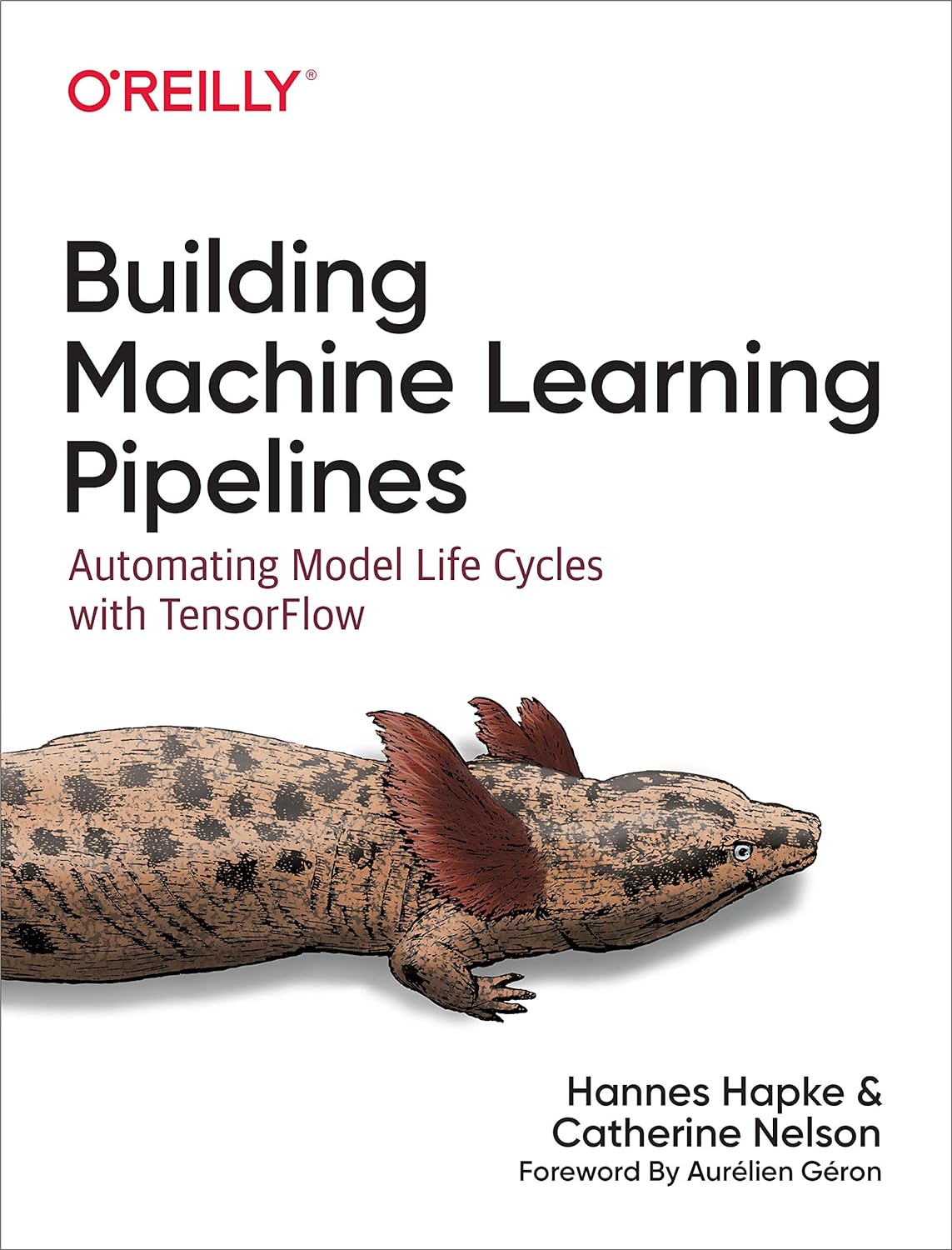
Building Machine Learning Pipelines: Automating Model Life Cycles with TensorFlow
Price:$79.99– $74.39
(as of Dec 24,2024 19:01:28 UTC – Details)From the brand


Explore our collection


Sharing the knowledge of experts
O’Reilly’s mission is to change the world by sharing the knowledge of innovators. For over 40 years, we’ve inspired companies and individuals to do new things (and do them better) by providing the skills and understanding that are necessary for success.
Our customers are hungry to build the innovations that propel the world forward. And we help them do just that.
Publisher : O’Reilly Media; 1st edition (August 18, 2020)
Language : English
Paperback : 364 pages
ISBN-10 : 1492053198
ISBN-13 : 978-1492053194
Item Weight : 2.31 pounds
Dimensions : 7 x 0.76 x 9.19 inches
Building Machine Learning Pipelines: Automating Model Life Cycles with TensorFlowIn the world of machine learning, the process of developing and deploying models can be time-consuming and complex. However, with the right tools and frameworks, it is possible to automate many aspects of this process, making it more efficient and scalable.
One such tool is TensorFlow, an open-source machine learning library developed by Google. TensorFlow provides a powerful set of tools for building and training machine learning models, as well as for deploying them in production environments. One of the key features of TensorFlow is its support for building machine learning pipelines, which are sequences of data processing and model training steps that can be automated and optimized.
By using TensorFlow’s pipeline capabilities, data scientists and machine learning engineers can streamline the process of developing and deploying models, reducing the time and effort required to bring models from prototype to production. This allows teams to iterate more quickly on model development, experiment with different approaches, and ultimately deliver more accurate and effective models.
In this post, we will explore how to build machine learning pipelines using TensorFlow, including how to preprocess data, train models, and deploy them in production environments. We will also discuss best practices for automating and optimizing these pipelines, helping you to get the most out of TensorFlow’s powerful capabilities for automating model life cycles.
#Building #Machine #Learning #Pipelines #Automating #Model #Life #Cycles #TensorFlow
